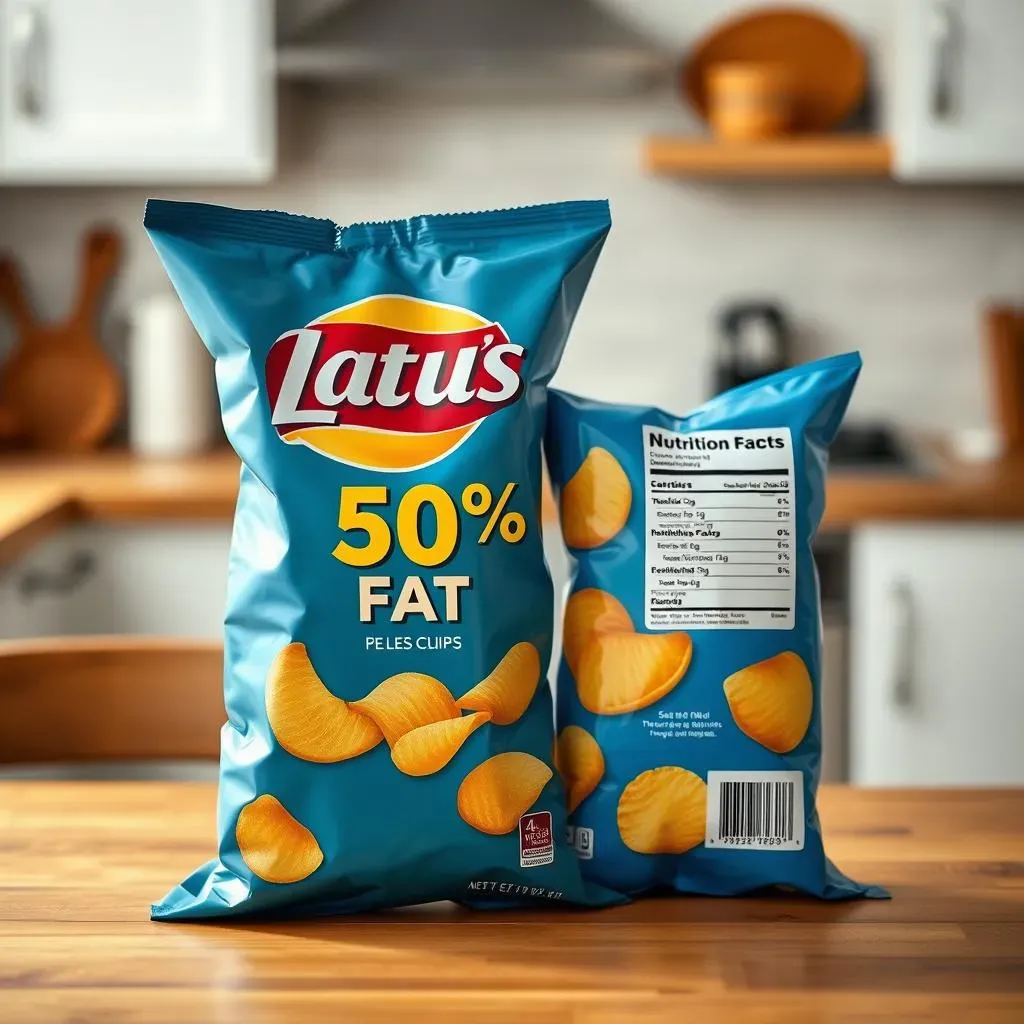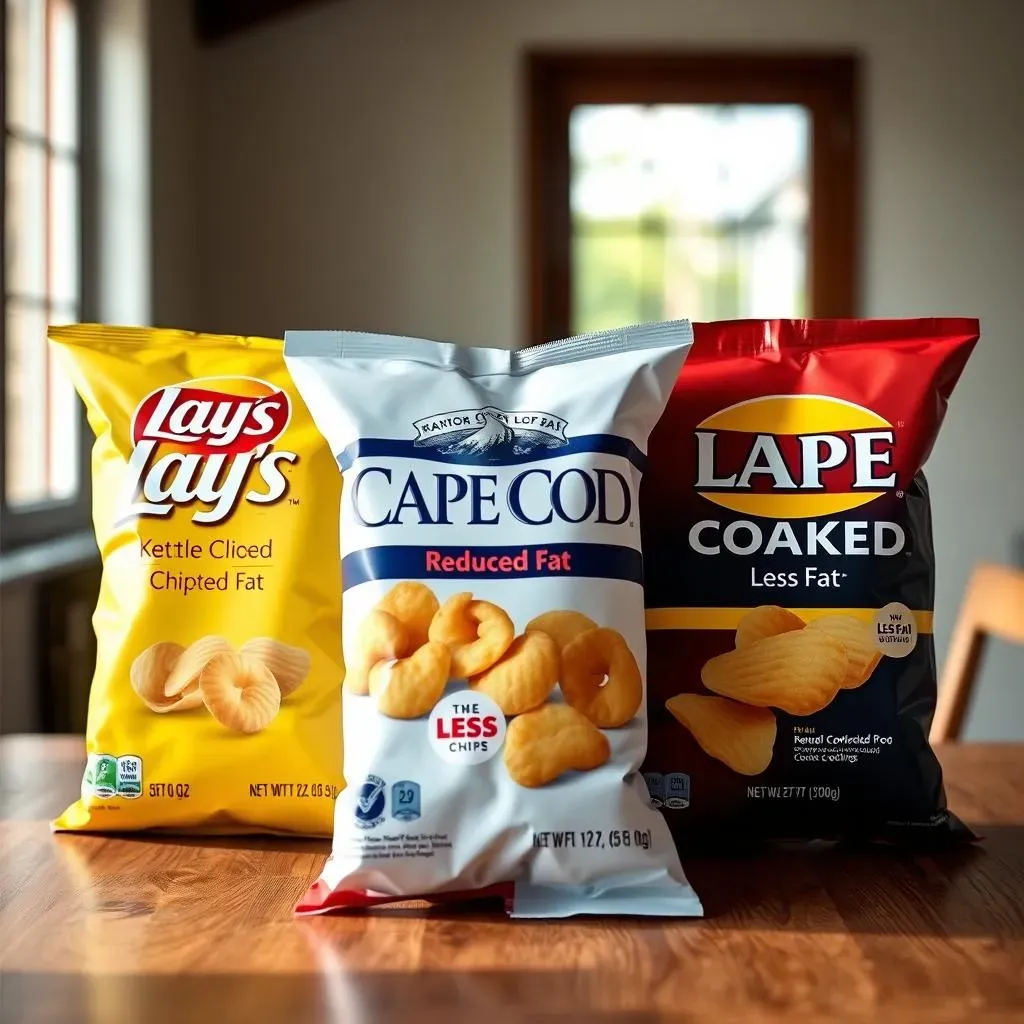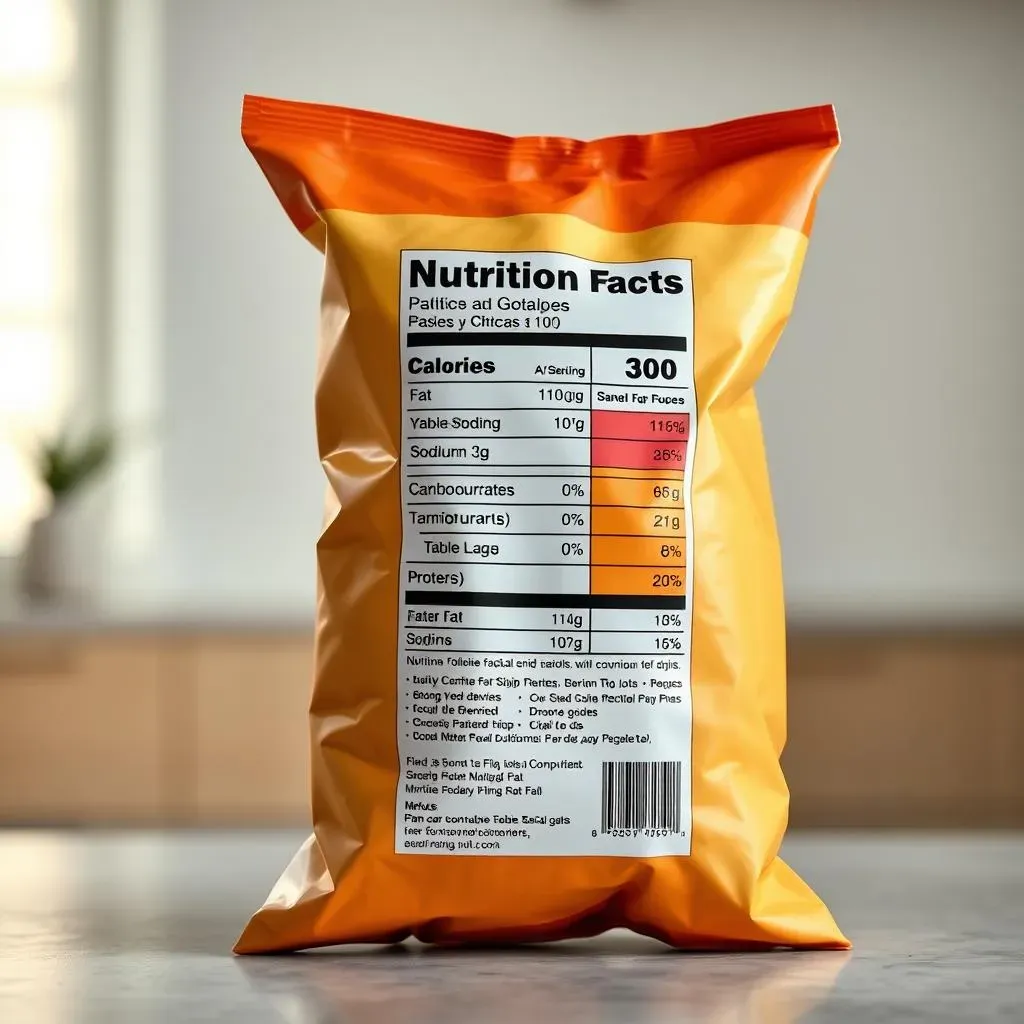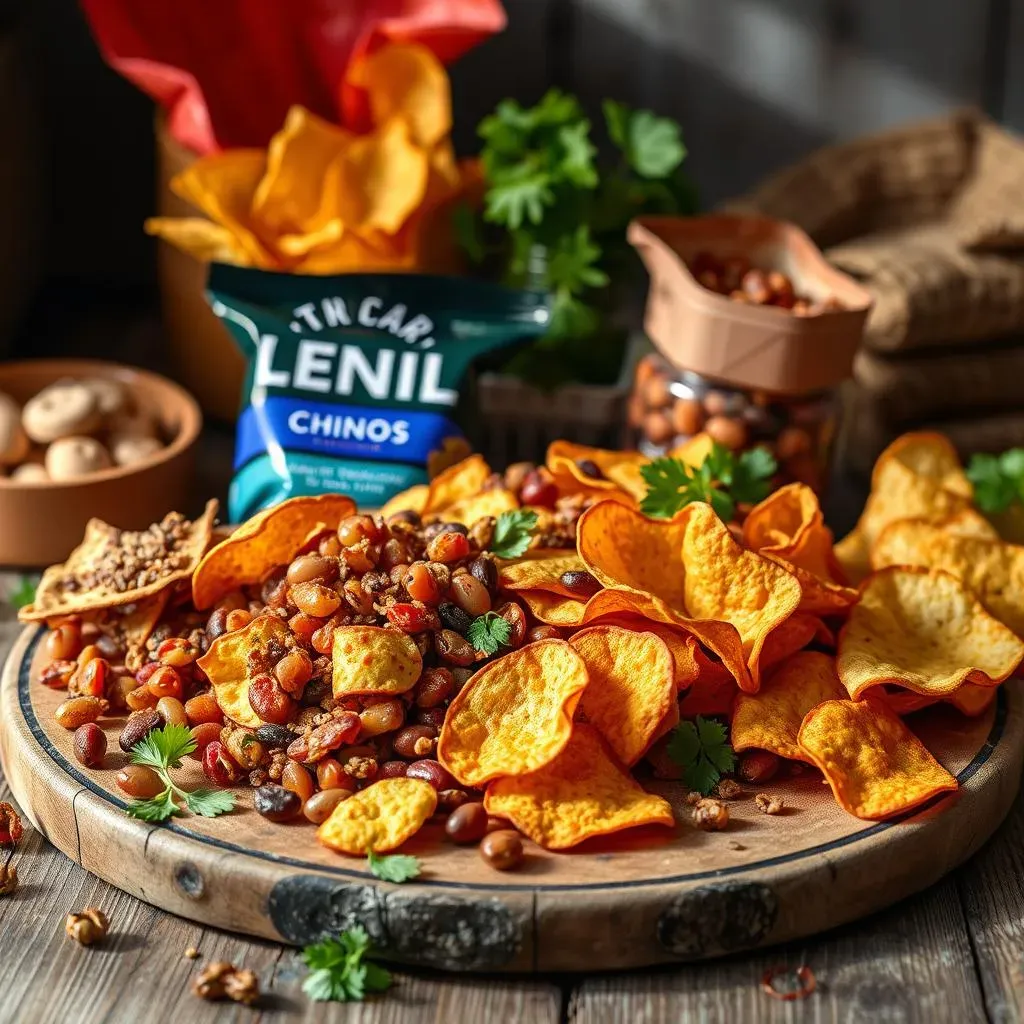Table of Contents
Let's be honest, potato chips are delicious. That satisfying crunch, the burst of salty flavor...it's hard to resist! But we also know that indulging too often can leave us feeling guilty. That's where "50% less fat chips" enter the picture. Sound too good to be true? Maybe, maybe not. This article cuts through the marketing hype to help you understand what those claims really mean. We'll explore the science behind "50% less fat" chips, examining popular brands and their offerings. We'll break down the nutritional information, highlighting what you should really be focusing on – not just fat content, but also calories, sodium, and added sugars. Finally, we'll explore some delicious and healthier alternatives to satisfy those chip cravings without the guilt. Get ready to make informed snacking choices – because understanding the facts empowers you to enjoy your favorite treats responsibly. So, are 50% less fat chips the answer to your snacking prayers? Let's find out!
Decoding the "50% Less Fat" Claim

Decoding the "50% Less Fat" Claim
What Does "50% Less Fat" Really Mean?
When a chip bag boasts "50% less fat," it's comparing itself to a standard, usually a regular fried chip. It's not saying it's fat-free, just that it has 50% less fat than its fried counterpart. This reduction often comes from baking the chips instead of frying them. Baking uses less oil, leading to fewer calories and fat. But, remember, "less fat" doesn't always mean "healthy." Always check the full nutritional information. For example, some baked chips might have a higher sodium content to compensate for the lack of fat. Think of it like this: it's a step in the right direction, but not the whole journey.
Let's say you're comparing a regular potato chip with 10 grams of fat per serving to a "50% less fat" version. That means the "less fat" option would have approximately 5 grams of fat per serving. However, that 5 grams is still a significant amount, depending on your diet. You should consider what other ingredients are in the chips, such as added salt and sugars. These ingredients can impact your overall health just as much, if not more than, the fat content. To learn more about other low-fat options, check out our guide on low-fat chip alternatives.
The Role of Ingredients and Processing
The type of oil used in the baking process also matters. Some oils are healthier than others. Look for chips baked with olive oil or sunflower oil, known for their heart-healthy fats. On the other hand, chips baked with highly processed oils might not offer the same health benefits. It's a bit like choosing your ingredients for a cake – some make it healthier, some don't. The processing methods also play a role. Some manufacturers might add extra salt or sugar to enhance the flavor after reducing the fat. Always check the nutrition label carefully for the full picture.
Consider this: two brands might both claim "50% less fat," but their ingredient lists could be drastically different. One might be packed with artificial flavors and preservatives, while the other uses natural ingredients. The difference lies in the overall quality of the ingredients and the manufacturing process. Finding healthier options isn't just about the fat content; it's about choosing products with less sodium and fewer artificial ingredients as well. For more recipes, check out our low-fat chips recipes page.
Ingredient | Potential Health Impact |
|---|---|
Olive Oil | Heart-healthy fats |
Hydrogenated Oils | Unhealthy trans fats |
Added Sugar | Increased calorie intake |
High Sodium | Blood pressure concerns |
Beyond the Fat: Considering Other Nutritional Factors
Focusing solely on fat can be misleading. While reducing fat is good, it's crucial to consider the overall nutritional profile. A chip with "50% less fat" might still be high in sodium, calories, or carbohydrates. For example, a serving might have a high sodium content which could negatively impact blood pressure. Therefore, it's vital to look at the bigger picture. Don't just look at the fat content; examine the entire nutrition facts panel.
Think of it like this: you wouldn't choose a car based solely on its fuel efficiency. You'd also consider safety features, comfort, and reliability. Similarly, don't choose a snack based on a single aspect. A "50% less fat" chip might be a better choice than a regular fried chip, but it's not automatically a health food. Consider the entire nutritional profile, including calories, sodium, carbohydrates, and fiber content. You can explore many other options by consulting our best low-fat chips guide.
- Calories per serving
- Sodium content
- Carbohydrate content
- Fiber content
- Added sugar
Popular Brands and Their 50% Less Fat Options

Popular Brands and Their 50% Less Fat Options
Lay's and Kettle Cooked Chips
Lay's is a giant in the chip world, and they've jumped on the "less fat" bandwagon with their Kettle Cooked Reduced Fat chips. They boast a 40% reduction in fat compared to their regular kettle-cooked counterparts. While not quite hitting the 50% mark, it's still a notable difference. Remember to check the nutrition label though – those delicious flavors might come with a higher sodium content. Also, consider exploring other options, such as our low-fat potato chips guide for more alternatives.
It's interesting to note that even within a brand like Lay's, the fat content can vary wildly depending on the flavor. Some "reduced fat" options might still be higher in fat than others. It's a bit of a chip-off-the-old-block situation – you need to be a detective and read the labels carefully! For those seeking even lower fat options, you might want to check out our guide on lowest fat chips available on the market.
- Lay's Kettle Cooked Reduced Fat
- Other Lay's Oven Baked varieties
- Check for specific fat content per flavor
Cape Cod's Less Fat Options
Cape Cod chips are known for their kettle-cooked crunch, and they also offer a "Less Fat" line. They claim a significant reduction in fat, making them a potentially healthier choice compared to their original counterparts. However, keep in mind that "less fat" doesn't automatically equate to "healthy." Pay close attention to the sodium and added sugar content, as these can easily offset any fat reduction benefits. To discover other healthy options, you can explore our low-fat chip alternatives.
One thing to consider with Cape Cod’s less fat chips is that the flavor might be slightly different from their regular chips. Some people find that the reduction in fat affects the texture and taste. It's like a trade-off – you get less fat, but you might lose some of that classic Cape Cod crunch. This is why comparing nutrition labels across brands is crucial. For more information on healthy snacking options, you might want to refer to our low-calorie chips for weight loss article.
Brand | Type | Fat Reduction Claim |
|---|---|---|
Cape Cod | Kettle Cooked | 50% Less Fat |
Lay's | Kettle Cooked | 40% Less Fat |
Other Brands and Considerations
Many other chip brands offer "reduced fat" or "baked" varieties. These often aim for a similar reduction in fat content. However, the specific percentage can vary, and the overall nutritional profile differs significantly based on ingredients and processing. Always compare labels to make informed choices. Looking for more options? Check out our guide on best low-fat chips.
Don't be fooled by marketing! "50% less fat" is a relative claim, and it doesn't tell the whole story. The overall nutritional value depends on the ingredients, processing methods, and the presence of added sugars and sodium. Therefore, reading and understanding the full nutrition facts label is crucial before choosing your snack. For specific recipe ideas, you might want to refer to our low-fat chips recipes.
- Read the nutrition labels carefully.
- Compare similar products across different brands.
- Prioritize lower sodium and sugar options.
The Nutritional Breakdown: What to Look For

The Nutritional Breakdown: What to Look For
Calories and Fat: The Obvious Suspects
Let's start with the basics: calories and fat. "50% less fat" sounds great, but how many calories are we actually talking about? A single serving might still pack a surprising number of calories, even with reduced fat. Think of it like this: a smaller, less fatty burger can still be surprisingly high in calories if it's loaded with cheese and sauce. Always check the "calories per serving" to get the full picture. And don't forget that fat isn't the enemy! Some fats are healthy; others aren't. Look for chips that use healthier oils like olive oil or avocado oil. For more information on healthy snacking options, check out our guide on low-calorie chips for weight loss.
Remember, those "50% less fat" chips might still contain saturated and trans fats, which are less healthy options. Reading the nutrition label carefully will help you to identify the types of fats present. Understanding this is crucial for making informed choices. Focusing solely on the total fat content can be misleading. To explore other healthy choices, consider checking out our low-fat chip alternatives article.
- Check calories per serving.
- Identify types of fat (saturated, unsaturated, trans).
- Look for chips made with healthy oils.
Sodium: The Silent Killer
High sodium intake is linked to various health problems, including high blood pressure. Many processed foods, including chips, are loaded with sodium. Even "50% less fat" chips can be surprisingly high in sodium. It’s like sneaking salt into your healthy smoothie! Therefore, always check the sodium content per serving. Aim for lower sodium options whenever possible. For a broader perspective on healthier snacking, you can take a look at our low-calorie chips for guacamole.
A good rule of thumb is to choose chips with less than 140 milligrams of sodium per serving. Remember that your daily sodium intake should be less than 2300 milligrams. Therefore, even a seemingly healthy snack can contribute significantly to your overall sodium intake. To find more options, you can check our low-calorie chips and crackers selection.
Nutrient | Recommended Daily Intake (approx.) | Importance |
|---|---|---|
Sodium | Less than 2300 mg | Blood pressure regulation |
Fiber | 25-30 g | Digestive health |
Sugar | Added sugar should be minimized | Weight management, energy levels |
The Rest of the Nutritional Picture: Carbohydrates and Fiber
Don't forget about carbohydrates and fiber! Carbohydrates provide energy, but not all carbs are created equal. Look for chips with a good balance of complex carbohydrates and fiber. Fiber helps you feel full and satisfied, preventing overeating. It's like adding a secret ingredient to your snack to keep you feeling satisfied for longer. This is important for weight management and overall health. Explore more options in our low-calorie chips or crackers guide.
The presence of added sugars is another critical factor to consider. Many processed snack foods contain added sugars, which can contribute to weight gain and other health problems. Opt for chips with minimal or no added sugars whenever possible. By paying close attention to these factors, you can make much more informed choices about your snacking habits. For recipe ideas, feel free to check out our low-fat chips recipe page.
- Check carbohydrate content (focus on complex carbs).
- Look for higher fiber content.
- Minimize added sugars.
Alternatives to Traditional Chips: Healthier Snacking

Alternatives to Traditional Chips: Healthier Snacking
Embrace the Bean: Lentil and Bean Chips
Let's ditch the potato! Lentil and bean chips are a fantastic alternative. They're packed with protein and fiber, keeping you fuller for longer than potato chips. Plus, many brands offer delicious flavors that rival traditional chips. Think of it as a sneaky way to get your daily dose of legumes! They're often baked, not fried, leading to lower fat content. Some even boast a similar satisfying crunch.
Looking for a tasty and healthy swap for your usual potato chips? Beanitos and other similar brands offer a variety of flavors, from classic nacho cheese to spicy jalapeño. These chips are often baked, not fried, making them a lower-fat option. For more ideas on healthy alternatives, check out our guide on low-fat chip alternatives.
- Higher protein content
- Increased fiber for satiety
- Often baked, not fried
Veggie Power: Explore the World of Vegetable Chips
Who needs potatoes when you have a rainbow of vegetables? Sweet potato, beet, carrot – the possibilities are endless! Vegetable chips offer a naturally sweet and satisfying crunch. They're often lower in fat and calories than potato chips, and they provide a boost of vitamins and minerals. Think of them as a fun way to sneak in your veggies!
Many brands now offer a wide variety of vegetable chips, made from ingredients like sweet potatoes, beets, and even parsnips! These chips often contain fewer calories and less fat than traditional potato chips, and they are a good source of vitamins and minerals. If you're looking for more low-calorie options, you can explore our low-calorie chips for guacamole guide.
Vegetable | Nutritional Benefit |
|---|---|
Sweet Potato | High in Vitamin A |
Beet | Rich in Nitrates |
Carrot | Good source of Vitamin C |
